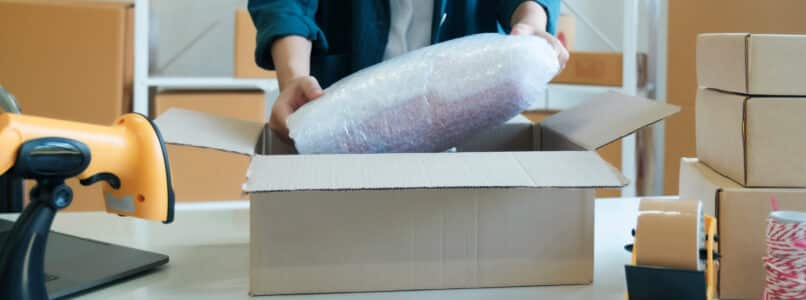Estimated reading time: 3 minutes, 34 seconds
In the world of online retail, where rising shipping rates threaten to squeeze profit margins, optimizing your packaging can be a game-changer. It’s a balancing act between keeping your products safe during transit and minimizing the dead space that drives up shipping costs. Here are some key strategies to consider, all with an eye on reducing the impact on your bottom line and the environment:
Right-Size Your Boxes to Reduce Dimensional Weight:
- Ditch the “one-size-fits-all” mentality. Instead, use a variety of box sizes that closely match the dimensions of your products. This eliminates unnecessary empty space that carriers charge for based on dimensional weight (DIM weight). DIM weight often exceeds the actual weight of your product, significantly inflating shipping costs.
- Consider custom inserts or dividers. For oddly shaped items or multiple small products in a box, custom inserts or dividers can prevent them from shifting and potentially getting damaged. These inserts can also be made from recycled materials, adding a sustainable touch. By using custom inserts, you can utilize smaller boxes without compromising product protection.
Choose the Right Materials to Reduce Dead Weight:
- Go beyond cardboard boxes. Depending on your product, consider lighter alternatives like padded envelopes, poly mailers, or rigid mailers. These can be ideal for certain items and can significantly reduce dead weight, the weight of your packaging compared to the weight of your product. Dead weight directly translates to higher shipping costs.
- Focus on fit, not just durability. While strong packaging is essential for fragile items, don’t over-engineer your packaging for everyday products. Cardboard thickness and internal padding should be appropriate for the weight and fragility of your product. Overly thick cardboard adds unnecessary weight to your package, impacting shipping costs.
Utilize Void Fillers Wisely to Minimize Waste:
- Not all empty space is bad. A small amount of cushioning is necessary to prevent items from jostling around during transport. However, excessive void fill adds unnecessary weight and bulk to your package.
- Think eco-friendly. Instead of packing peanuts or plastic bubble wrap, explore sustainable void fill options like recycled paper squiggles, biodegradable packing peanuts, or air pillows. These offer comparable protection with a lower environmental impact and typically weigh less than traditional options.
Automate When Possible to Minimize Errors:
- Invest in packaging equipment (if feasible). For high-volume businesses, automated box sizing and packing machines can significantly improve efficiency and reduce the chance of human error when it comes to choosing the right size box. These machines can also help you select the most appropriate amount of void fill, further reducing dead weight and lowering shipping costs.
Beyond Cost Savings and Reduced Shipping Impact:
Optimizing your packaging isn’t just about saving money and minimizing your shipping impact. Here are some additional benefits:
- Improved Customer Experience: A well-packed product that arrives undamaged builds trust and satisfaction with your brand.
- Reduced Environmental Impact: Using less packaging material and opting for sustainable options minimizes your environmental footprint.
Remember:
Optimizing packaging is an ongoing process. Experiment with different materials and approaches to find the perfect balance between cost-effectiveness, product protection, and environmental responsibility. By doing so, you can navigate the challenges of rising shipping rates while ensuring your products reach your customers safely and securely.
How a 3PL Can Help E-Commerce Businesses Solve the Packaging and Shipping Challenge:
For e-commerce businesses, implementing these packaging optimization strategies can be time-consuming and require upfront investment in materials or equipment. This is where a 3PL (Third-Party Logistics) company can be a game-changer.
- Discounted Packaging Materials: 3PLs often have negotiated bulk discounts with packaging suppliers. These savings can be passed on to you, reducing your packaging costs and minimizing the overall impact on your bottom line.
- Custom Packaging Solutions: Some 3PLs can design and create custom packaging solutions tailored to your specific products. This ensures a perfect fit and minimizes wasted space, leading to smaller boxes and reduced shipping costs.
- Kitting Services: If your products are often sold together in bundles or gift sets, 3PLs can pre-assemble these kits for you. This saves you significant time and labor costs associated with manual kitting, freeing up resources that can be directed towards other areas of your business.
- Expertise and Efficiency: 3PLs have the expertise and experience to optimize packaging for various products, ensuring you use the most appropriate and lightweight materials while maintaining protection.
Many 3PLs, like Selery, offer customized packaging and kitting services that can significantly benefit e-commerce businesses in their fight against rising shipping costs.


